Sensory gardens are great for people with seeing problems, offering spaces that boost touch, smell, and sound1. They are made to meet the special needs of those who are visually impaired. These gardens are easy to get around and bring a lot of joy and peace.
They use bright colors, special plants you can feel, flowers that smell good, and things like wind chimes for sound2. This mix makes these outdoor places lively and enjoyable for people who can’t see well.
Key Takeaways
- Sensory gardens can significantly improve the quality of life for visually impaired individuals1.
- Adaptive designs focus on enhancing senses such as touch, smell, and hearing13.
- High-contrasting colors and tactile plants are essential features of sensory gardens2.
- Auditory elements like wind chimes add an enriching sensory dimension2.
- With proper design, sensory gardens become therapeutic and inclusive green spaces1.
Introduction to Sensory Gardens for Vision Impaired
Sensory gardens help those who can’t see well by focusing on all the other senses. They use special plants and designs. This makes the garden a soothing place.
These gardens pick plants that help people feel, smell, and listen. For example, some plants give off strong smells. This can fill the air or be felt up close. Plants that make noises in the wind are also picked carefully2. A therapeutic garden for the blind must be planned out well to be truly helpful.
Sound in these gardens is very important. Wind chimes are a great choice for hearing. Water features and plants that make noise when windy also add to the fun4. Tactile parts are exciting, too. They use plants with special touches, like chenille and hyacinth4.
Gardens use colors and touch to make things interesting. Bright flowers are best for those who can partly see. They help spot different plants easily2.
- Adding colorful flowers with different plants like ferns makes the garden lively2.
- Special paths and borders with unique touches help those who can’t see well navigate better5.
Being able to move around easily is crucial. Straight paths and notable stops make gardens safer. They help everyone get around better. Wider paths and different surfaces help those in wheelchairs, too5.
Some gardens even have plants you can eat, like nasturtiums. Berries and herbs are also used. These plants are marked so people can tell them apart easily4. Growing and eating from the garden can be fun and educational2.
| Element | Function | Example |
|---|---|---|
| Fragrance | Stimulates smell | Lavender, rosemary |
| Sound | Stimulates hearing | Wind chimes, water features |
| Tactile | Stimulates touch | Chenille, hyacinth |
| Visual | Stimulates vision | High contrast flowers |
| Taste | Stimulates taste | Edible flowers, herbs |
Benefits of Sensory Gardens for Visually Impaired Individuals
Sensory gardens are made for people who can’t see well. They help in many ways, making people feel better overall. These special outdoor areas are made to be part of nature. They help people physically, mentally, and emotionally feel well. Things in these gardens are there for you to touch, hear, smell, and sometimes taste. This way, everyone can enjoy the beauty of outside.
Therapeutic Benefits
Sensory gardens are great for those with health issues like dementia. They are very calming and lower stress. These gardens use smells, sounds, and more to help people remember good times6. For people who can’t see well, they offer activities that keep them feeling good and connected. This also helps people with autism focus better and feel happier by being around different things.

Inclusive Spaces
Designing outdoor spaces for everyone means thinking carefully. For the blind, making flower beds easy to reach and with different textures helps a lot7. Using sounds or special tools makes it possible for them to do gardening too3. It’s also about making sure there’s space to walk without falling and everything is easy to find. These gardens help everyone come together and enjoy being outdoors in many ways.
Choosing the Right Plants for Sensory Gardens
In sensory gardens, picking the right plants is key. It helps make a space that welcomes everyone and excites the senses. Mixing plants that are touchable and fragrant makes visiting a *sensory experience*.
Tactile Plants
Picking plants with different feels is critical. Ferns and grasses change up the garden with textures that beg to be touched. Choosing plants like pussy willow and wooly thyme can provide a beautiful touch-friendly area8. Another cool choice is the chenille plant, with its fuzzy texture, adding to the garden’s look and feel8. Make sure these plants can take a lot of touching to keep them healthy.
Fragrant Plants
Adding sweet-smelling plants makes a memorable scent garden. Herbs such as lavender and rosemary bring calming smells that get stronger when touched. Choosing nice smells that aren’t too strong is important, so it’s pleasant for everyone, even those with sharp noses9. Adding plants like honeysuckle, gardenia, and pines gives a variety of beautiful scents10. Picking these plants carefully makes sure the garden smells nice but not too strong.
Sensory Garden Design Principles
Sensory garden design is key to making spaces everyone can enjoy. These guidelines help all visitors use and enjoy the garden’s features. They ensure the design helps everyone, even those who can’t see well, have a great visit.
Paths are very important in a sensory garden. They help people move around easily and know where they are. By adding different textures or landmarks, you can make sure everyone can navigate the garden well. This makes the garden a welcoming place for all.
Seating is critical but sometimes forgotten in garden planning. By placing seats along the paths, you give people a chance to rest and enjoy the view. It also helps to have different types of shade so everyone can find a comfortable spot11.
Multi-sensory Elements
Sensory gardens use many elements to engage our senses. Things like water, wind chimes, and bird feeders make the garden come alive. They help people, especially those who can’t see well, enjoy the sounds and smells of nature12.
Touch matters a lot in these gardens. Different plants offer various textures to explore. This is very important for those with sight problems. It helps them connect with the garden in a special way13.
Adding shapes and patterns makes the garden more interesting. It can also be a way to enjoy art outside. Following these principles makes sure the garden is open and fun for everyone who visits.
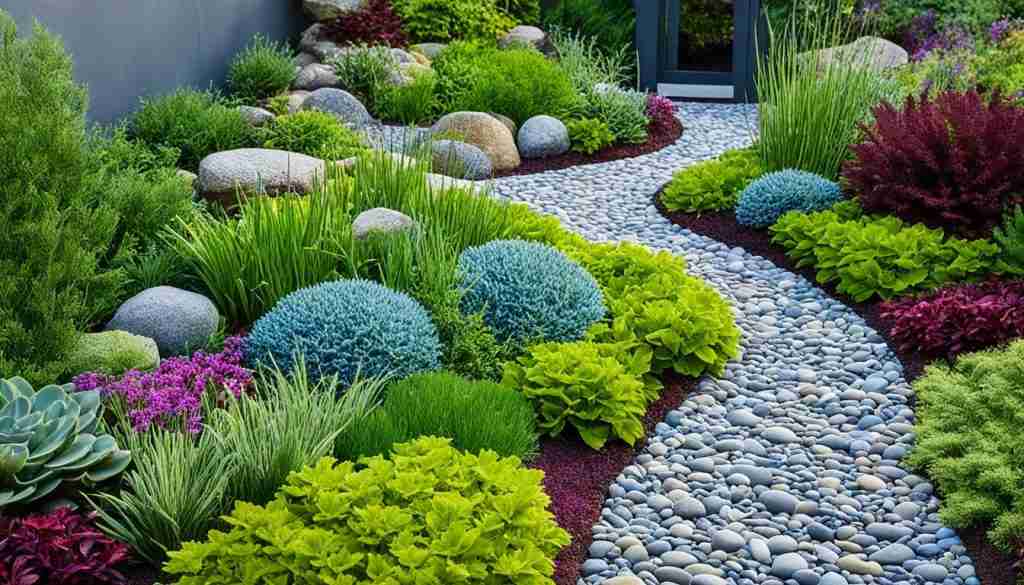
Ensuring Sustainable Sensory Experiences
Sustainable sensory experiences are key for lasting and vibrant sensory gardens. It’s crucial to pick plants that are tough and need little care. Schools and nurseries use these gardens to offer health boosts and learning chances14.
For sight, colors, shapes, and textures of the plants are vital. This includes plants like fragrant flowers, herbs, and those with interesting textures14. It’s also great to mix warm and cool colors. Use yellow for its brightness and blue or purple for a calming effect1516.
Designing these gardens with accessibility and safety in mind is a must. Add wide, flat paths and raised beds for wheelchairs16. Keeping the garden easy to take care of over time means selecting plants that adapt well to different seasons14. Plants with fun textures, like sage and lamb’s ear, add more sensory fun too16.
When aiming for gardens that people with sight issues can enjoy too, choose plants with safe touches and good looks. Lavender, rosemary, and succulents are excellent choices for multi-sensory delight14. At Logandene mental health unit, teamwork keeps the garden beautiful. It also helps people feel proud together16.
| Design Considerations | Examples | Benefits |
|---|---|---|
| Accessibility & Safety | Wide walkways, raised beds | Enables wheelchair access16 |
| Plant Variety & Seasonality | Fragrant flowers, edible plants | Continuous sensory engagement14 |
| Durable Plant Choices | Pineapple Sage, Lamb’s Ear | Low-maintenance, tactile qualities1416 |
| Community Involvement | Collaboration with local organizations | Enhanced user engagement and sustainability16 |
Focus on sustainability and sensory experience to make a garden that thrives. By doing this, sensory gardens become lively and enjoyed by everyone for a long time.
Accessible Gardening Tools for the Vision Impaired
Accessible gardening tools are key for the visually impaired. They make gardening easier and improve the whole experience. Bright and well-designed tools help make gardening accessible and fun.
Brightly Colored Tools
Tools with bright, easy-to-see colors and contrasts are a big help for those with vision problems. They are easy to spot, making gardening more enjoyable for the visually impaired17. Using bright tape on tools also helps quickly identify them17.
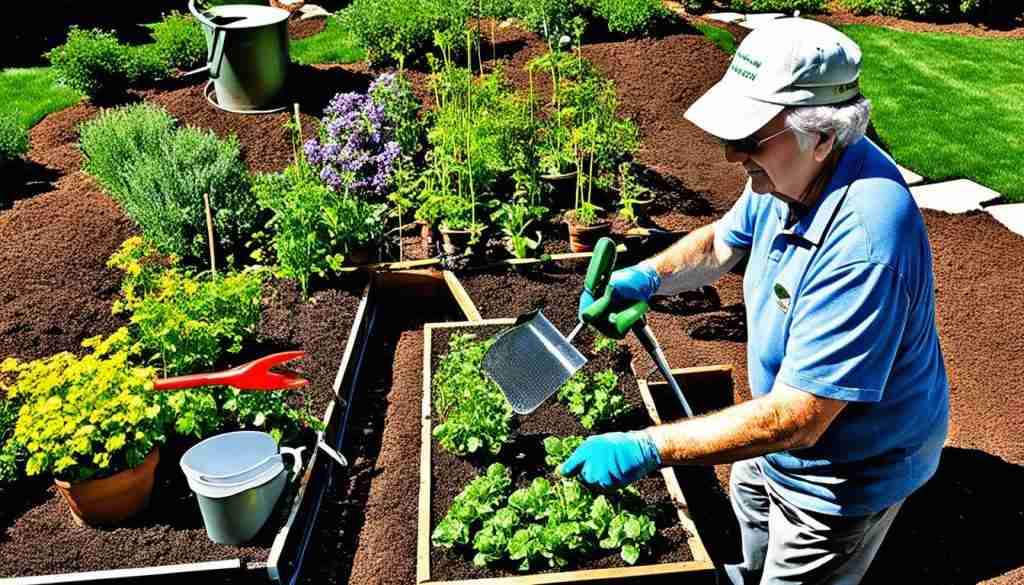
Tool Accessibility
It’s crucial that garden tools are easy for the visually impaired to use. Short-handled tools work well for tasks near the ground, giving more precision and comfort17. Multi-change tools, which have heads that can switch out, are great for different gardening jobs. They are a top choice for those into gardening but have trouble seeing well17. Including tools that work automatically, like robot mowers, helps reduce the physical effort of gardening. This way, visually impaired folks can keep up their gardens without as much hard work17.
Creating a Safe and Comfortable Space
Designing safe gardens means thinking about everyone’s needs. This includes the ability to touch, hear, and smell different things. The sensory garden at Kingsbrae Garden has gardens raised to waist-high. They are for people who can’t see well, with labels in Braille, English, and Latin18.
Comfortable gardens need places to sit and stay out of the weather. Kingsbrae Garden has benches for quiet sitting spots18. Many types of plants are also important. 80% of the garden’s feel comes from the plants chosen. Plants like flowering dogwood and wild rugosa roses help people feel calm1918.
Now, it’s very important to make sure sensory gardens are safe. There’s been a big 72% jump in safety features. This means having safe paths and plants that aren’t harmful, especially for kids or the elderly19. Making these gardens easy for wheelchairs and with clear paths helps everyone. Working together makes these gardens safer and brings people together. There’s been a 67% rise in community work in these gardens19.
Overall, the aim is to welcome everyone to these special gardens. They should feel secure and happy in these places. Safe design and smart additions make these gardens a place for relaxation. They help not just with peace but also with making friends and feeling good.
Maintenance Tips for Sensory Gardens
Maintaining a sensory garden needs good planning and regular care. They are perfect for learning, relaxing, and healing20. Use tough plants and green habits to make your garden last longer and more fun for all.
Durable Plant Choices
It’s key to pick plants that can handle a lot of touching. Go for local plants since they’re easy to care for and great for the environment21. Plants like lamb’s ear and lavender feel great and smell wonderful. They stay nice even if people touch them a lot.
Sustainable Practices
Using green methods in your sensory garden helps nature and keeps it interesting. Stuff like mulch should be added often to keep it nice20. Water features and plants with different textures keep the garden looking and feeling good21. You can make a sensory garden in any space, big or small, to fit anywhere20. Doing these things keeps sensory gardens full of beauty and interesting things to touch and smell.
Community Involvement and Engagement
Getting involved in the community helps sensory gardens for the visually impaired flourish. By hosting various activities, everyone can enjoy and learn from these gardens. We make the garden experience fun, especially for those with sight challenges.
Workshops and Events
Join us for fun and learning in the sensory garden. We have activities like touch garden tasks, great for kids with sight problems22. Visit pick-your-own farms to learn about fruits and veggies, which is both fun and educational22. These events also help folks with sight issues feel included and more mobile23.
Collaboration with Local Organizations
Let’s work together with local groups to make the gardens better. With local farms, we make activities for kids with special sensory needs22. Our work with volunteers helps keep the gardens nice. This makes us all feel like the gardens are ours to care for.
“Outdoor activities, such as gardening, can improve mental health by encouraging mindfulness and cognitive performance.” – Sustainable Home Magazine24
Adding local plants that attract pollinators helps the environment and garden care24. These efforts also make the gardens a great place for folks with Autism or Alzheimer’s. It gives them a happy, safe spot24.
| Activity | Benefit |
|---|---|
| Sensory Garden Workshops | Interactive learning and community bonding22 |
| Pick-Your-Own Farms | Seasonal learning and fresh, engaging experiences22 |
| Collaborative Projects | Enhanced inclusivity and community ownership2324 |
Take part in garden workshops and local projects to improve gardens for everyone. Doing so makes life better and strengthens our community24. These gardens become places for learning, meeting people, and making memories together.
Conclusion
Creating a sensory garden for the visually impaired is a rewarding task. It involves engaging all senses. This includes sight, hearing, smell, taste, and touch. You need to pick the right plants and items to do this. For instance, wind chimes from bamboo, steel, and aluminum make different sounds. They help visitors enjoy the sounds around them25. Having things like Braille name boards makes it easy for everyone to enjoy the garden25.
Sensory gardens are welcoming for everyone. They help people with sensory issues and those with ADHD. These gardens can make a big difference. For example, walking on different paths can help children with ADHD behave better26. Besides being therapeutic, these gardens are places to do physical activities. This is good, especially for those who find it hard to move27.
These gardens can last a long time and have many good effects. Communities can join in by hosting workshops and events at the garden. This makes them care for the garden together. Sustainable Home Magazine says these gardens show how important inclusive designs are. They also prove how nature’s senses can heal. By designing and taking care of these spaces well, we can make everyone feel welcome and well in them.

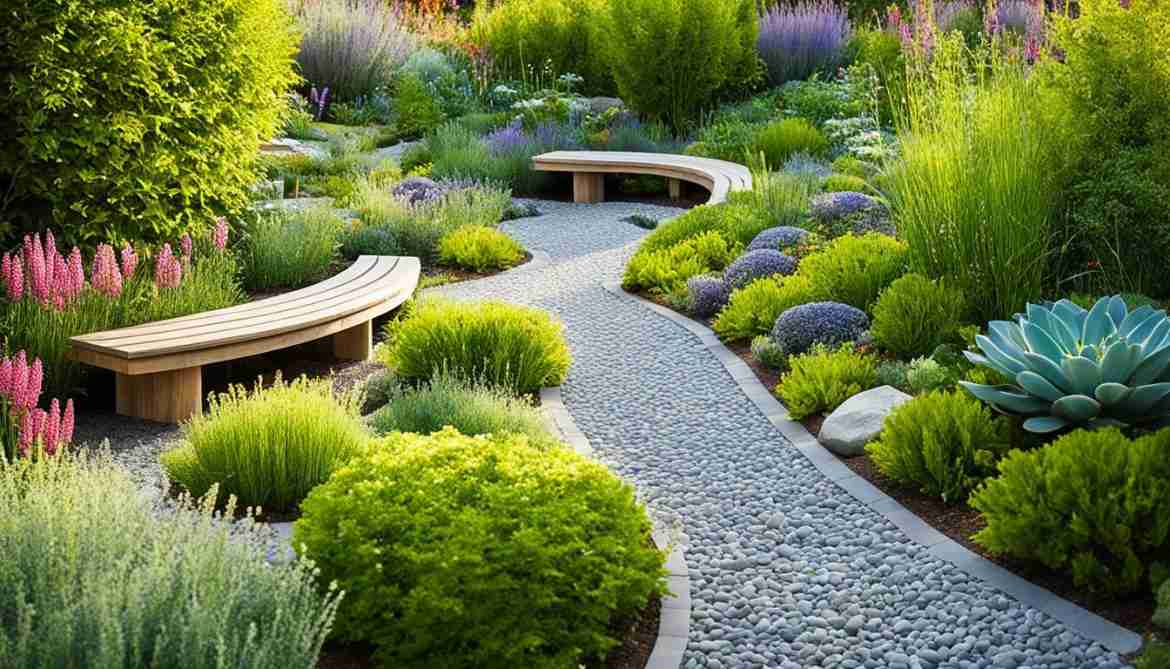
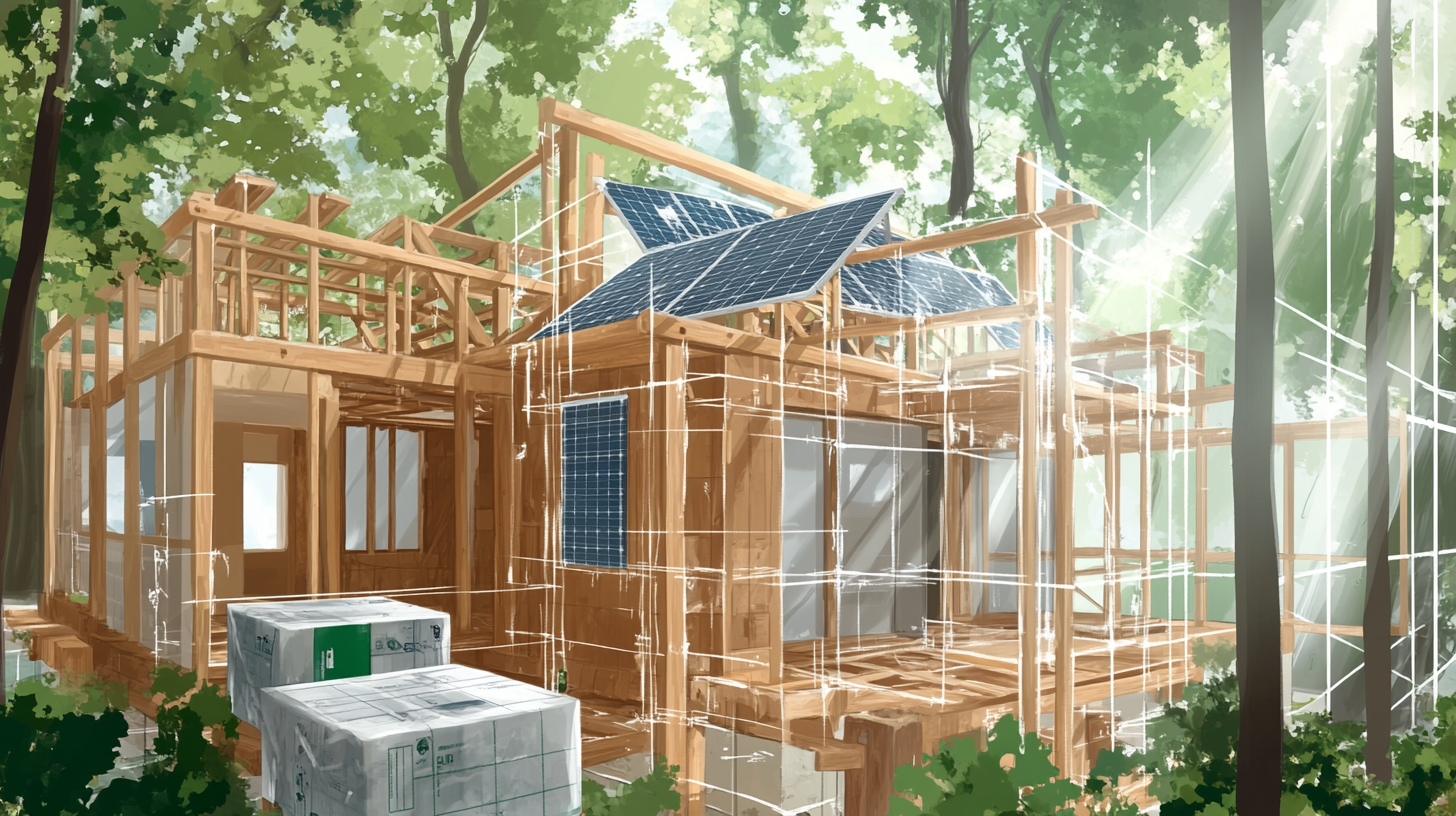


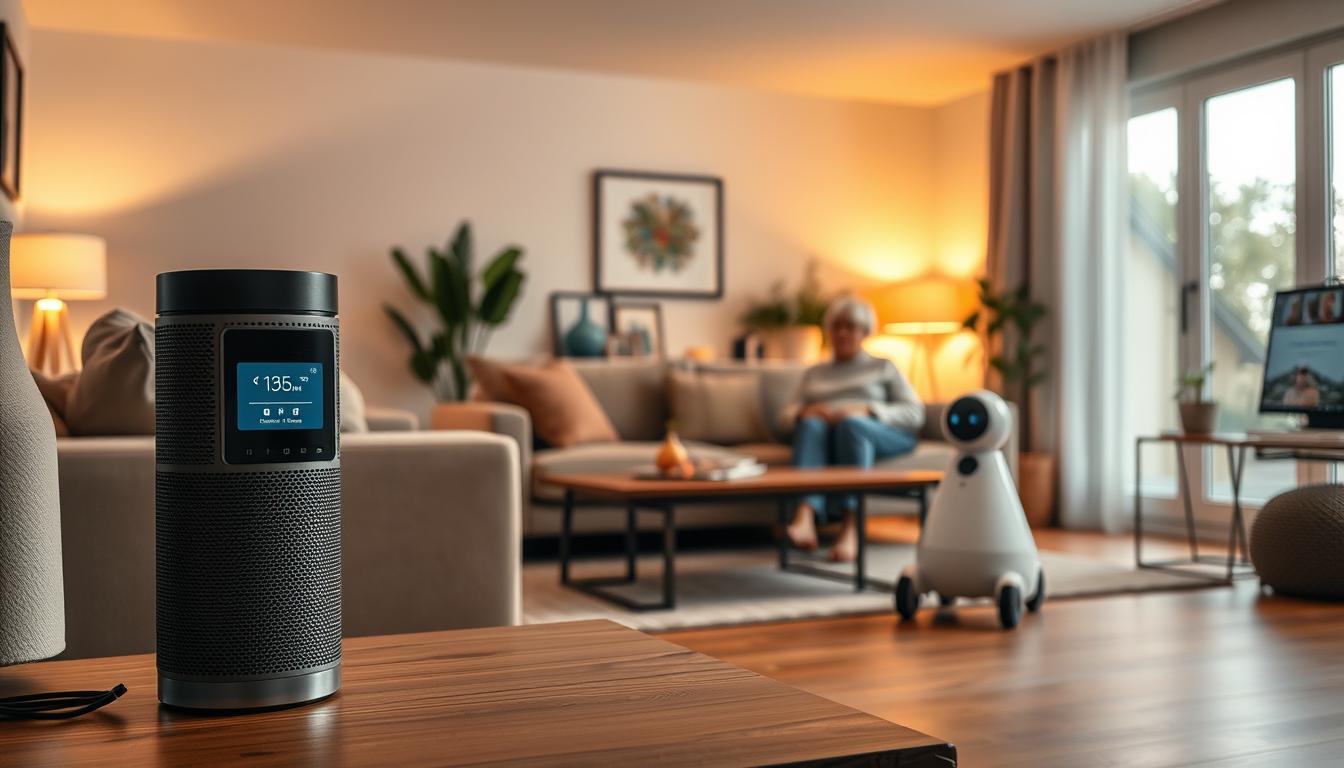

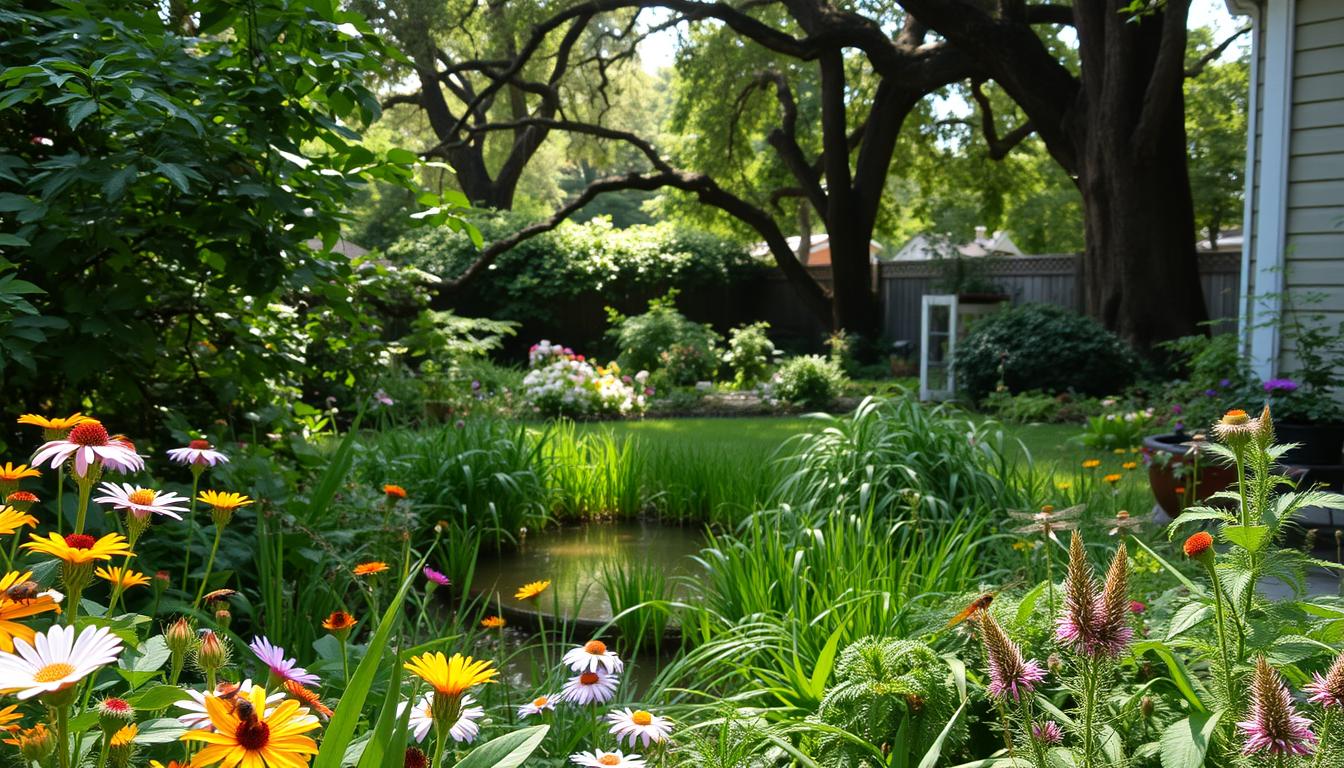


1 comment
[…] features. Broken concrete mosaics or pallet wood paths add unique charm and character to any garden design, transforming ordinary spaces into extraordinary ones. The versatility of these materials means you […]